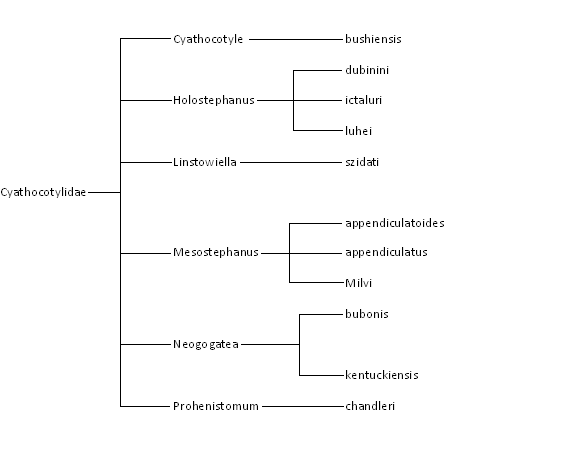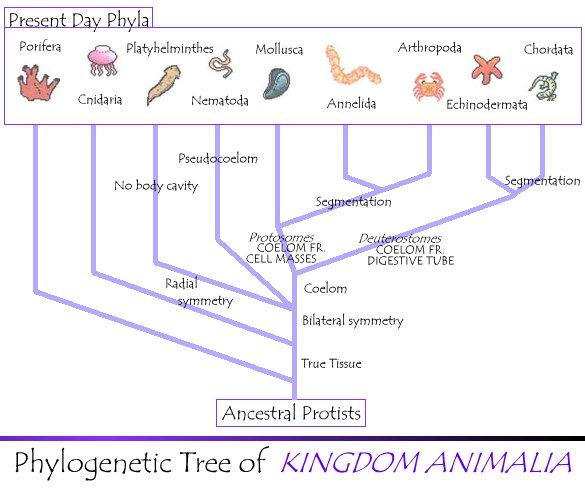Classification
Domain: Eukarya
Eukarya are organisms with true organelles and a true nucleus. These organelles
and nucleus have membranes around them. Eukarya also have rRNA that differ from
that of Arhcaea and Bacteria
Kingdom: Animalia
Cyathocotyle bushiensis is part of the Animalia kingdom for multiple
reasons. It is a multicelluslar, heterotrophic organism. When it ingests its
food it is then digested inside the body, which is the case in most animals. The
cells that make up the body do not have cell walls and make up tissues. These
tissues perform special functions depending what they are specialized to do.
These tissues are also usually organized into organs. Most animals cells are
diploid. Also in most cases they use sexual reproduction (Myers, 2001).
Phylum: Platyhelminthes
The phylum Platyhelminthes is a group of unsegmented, bilaterally symetrical,
acoelomates that posess three germ layers. They have a nervous system made of
cephalizations. These cephalizations contain a head ganglion. This head ganglion
is connected to the rest of the bodies nervous system via longitudinal nerve
cords. The longitudinal nerve cords are connected by transverse branches that
run across the body (Myers, 2002).
Class: Trematoda
Cyathocotyle bushiensis is part of the class Trematoda because all
trematodes are parasitic. The hosts the adult form preys off of is a vertebrate.
Trematodes also have a tegument covering the body and one or two suckers along
the ventral surface. Trematodes like C. bushiensis have a complex life
cycle as well. They require more than one intermediate host for development
before they take on their adult form (Myers, 2001).
Order: Strigeatida
This order is characterized by their cyst wall. They cyst stage has a thick wall
that contains a lot of lamellae. Another important characteristic is their
adhesive organ.
Family: Cyathocotylidae
Cyathocotylidae usually does not have a ventral sucker. Oval is generally the
shape the body takes. This compact body has a head region, holdfast, and cirrus.
The head region is not very evident, the holdfast is for attachment to the host,
and the cirrus sac is the reproductive structure. Another key characteristic is
the shape of the ceca in the posterior end. It forms a continuous loop or arc
(McDonald, 1981).

The above is a breakdown of the entire Cyathocotylidae family into the different
Genus and species.
Genus: Cyathocotyle
Cyathocotyle can be identified by their reproductive structures. Both the testes
and ovoid structures are elongated. It extends to be about 25 percent of the
body length. The holdfast is another important characteristic because it is so
large. They holdfast may extend to as long as 2/3 of the body length.
Cyathocotyle also have no ventral cavity (McDonald, 1981).
Species: bushiensis
The presence of tegument over the holdfast helps to determine Cyathocotyle
bushiensis. This tegument is different from the tegument covering the rest
of the body. It is much thinner to allow for absorption of nutrients into the
holdfast (Erasmus, 1972).
To learn more about C. bushiensis and how it uses these characteristics please click on the Reproduction link or others.
